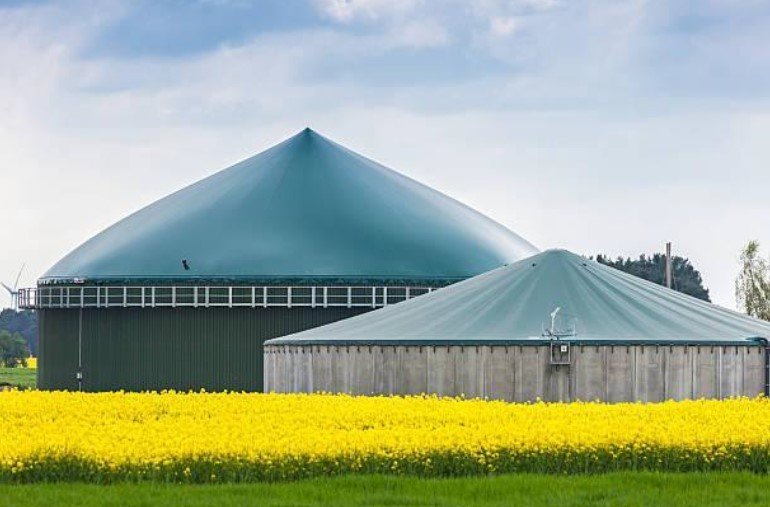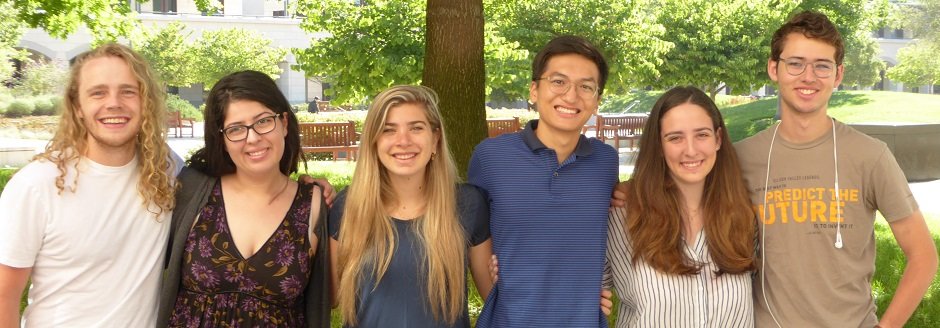2018 Renewable Natural Gas in California
ABOUT THE PROJECT
Beginning in June 2018, the TomKat Energy Impact Fellows investigated biogas emissions from dairy farms and landfills, and whether it can be used as Renewable Natural Gas (RNG) in the state of California.
Over the past decade, California has undertaken aggressive steps to capture and utilize fugitive methane emissions from a variety of sources where they are an unavoidable byproduct. These include biogas emanating from landfills, wastewater treatment plants, farms, and dairies. To combat these climate pollutants, the California Senate Bill 1383 was signed into law in 2016 which established targets to achieve a 50% reduction in the level of statewide disposal of organic waste from the 2014 level by 2020 and a 75% reduction by 2025. In addition, SB 1383 requires that dairies in California control their methane emissions as early as 2024. The bill mandates the establishment of infrastructure and policies for dairy farms to reduce methane emissions by up to 40% from 2013 levels by 2030. The challenges and opportunities presented by these two initiatives are the primary focus of this study.
Various incentive schemes at the state and federal level have proven to be powerful driving forces behind biogas capture, conversion, and commercialization efforts. Chief among these is the Renewable Fuel Standard which requires, among other things, a traceable pathway from suppliers to end users in transportation vehicles. However, to date, California has trailed other states in the advancement and harnessing of biomethane and renewable natural gas (RNG) opportunities for a variety of reasons including:
- Sub-optimally aligned and coordinated regulatory/permitting processes and agencies
- Excessive project time and cost
- Economic and regulatory barriers to biogas utilization including significant regulatory hurdles for pipeline injection.
Resolution of these obstacles will be key to realizing the objectives of SB 1383.
It has been estimated that the Organics Diversion effort will require the establishment of 150-200 new “landfill equivalents” in California at a cost of $1.5-2.5B.
- Given that only 2 new landfills have been approved in the past 2 years, it is clear that a dramatic re-design and streamlining of the approvals process will be required.
- Upgrades to existing recycling facilities and some of the 900 wastewater treatment plants in California could absorb a large portion of these diverted organics and possibly reduce the regulatory burden and investment required.
- A major challenge is the variable and sometimes excessively high (40%) contamination levels in organic waste. A much more aggressive statewide effort of outreach, education, and enforcement will be required to bring these levels down to an ideal 5-10%.
- It is imperative that obstacles to pipeline injection and on-site electricity generation be conclusively addressed and resolved. From a resource management and financial perspective, it is undesirable that it is currently easier to flare biogas than it is to make use of it.
The challenges faced by dairies in California are primarily a function of their size and distributed nature. Their inability to individually realize economies of scale and their distance from potential offtake sites significantly erodes the economic viability of their biogas generation potential.
- Concepts based on dairy cluster models with a variety of processing, transportation, local utilization, and pipeline injection options do appear to offer a pathway to project viability. These have been successfully piloted in other regions and the results of the scheduled PG&E cluster study should go a long way toward defining the operational and economic frameworks of this model.
- It is imperative that governance of local zoning and land use ordinances be expedited on a case-by-case basis to facilitate these undertakings. Standards must be developed that address the interests of surrounding communities, yet, that do not create undue burdens on the already stressed dairy industry.
Through the TomKat Fellows' research, the team was able to provide recommendations to public policy, utilities, and private industry on actions and changes that can be made to promote sustainable growth in the production of biogas, as well as recommendations to fulfill waste diversion goals set by the California government. The full findings of the TomKat Fellows' research can be found in their final report.
Renewable Natural Gas Project - Conclusions & Recommendations
General - RNG
-
Create a renewable natural gas procurement program for California’s natural gas corporations
To ensure that California achieves its fugitive methane reductions and renewable energy and climate change objectives it is of some urgency that a viable market alternative to the federal RFS is created that will attract the investment capital necessary to develop RNG production facilities in-State. To this end long-term procurement requirements should be set for certain gas corporations to create RNG market certainty and bolster investor confidence. This would be analogous to the long-term Power Purchase Agreements that catalyzed large scale solar deployments and would include, for example, contract terms of at least ten to twenty years and a price schedule that supports project development and ensures adequate cost containment and ratepayer protections. -
Ensure cooperation between different government entities for the adoption of unified standards to meet the goals of SB 1383
It is crucial to establish that all relevant agencies are closely aligned and on the same timetable with regards to meeting the goals of SB 1383. Often, RNG production facilities face obstacles because of the considerable differences between the permitting processes in different parts of the state. We recommend the creation of statewide standardized permitting templates for RNG production facilities with the potential for automatic approvals for technologies that have been approved as best available technology (BAT) in one region to be approved in other regions. A task force could be created to identify and resolve conflicting regulations, eliminate or modify outdated specifications or requirements, and form a database for approved equipment, designs, processes, and procedures. These measures would lead to an expedited permitting process for RNG projects. -
Revisit regulations for RNG pipeline injection standards
Research has found that the siloxane and minimum heat standards for RNG pipeline injection in California are so stringent that they often become unattainable. Furthermore, the existing fossil gas in California’s pipelines can often fail to meet the specifications set for RNG. Consequently, RNG that has been conditioned and could improve the quality of and decarbonize the gas in the pipeline - is being rejected. While additional research is still needed to identify what the standard limits should be, overly stringent standards, effectively prohibit the injection of RNG into California’s common carrier pipelines. -
Increase capacity for RNG by incentivizing the conversion of diesel fleets and increased deployment of medium- and heavy-duty natural gas vehicles to be fueled by RNG
It would be very useful to involve all stakeholders (engine & truck manufacturers, truckers/haulers, regulators, CNG/RCNG providers, etc.) in a detailed review of the advantages and the disadvantages of converting diesel trucks and fleets to Low-N0x natural gas engines fueled by RNG. Once this report has been created, strategies to overcome barriers of diesel conversion to natural gas engines can be developed. Furthermore, initiatives and incentives to upgrade state, county, city, and municipal fleets can be created. Finally, in order to allow the conversion of diesel fleets to CNG vehicles fueled by RNG, it is necessary to resolve issues surrounding the expansion of on-site, private and public CNG fueling stations. -
Guarantee the value of RINs and other financial incentives
One of the largest obstacles impeding RNG adoption is the financial precarity of the RIN market, which is susceptible to non-negligible price fluctuations. Stability in RNG values would encourage investment in RNG. Guaranteeing a RIN price would require changing the underlying legislation, which is unlikely. Other efforts could be made to advocate pathways that would accomplish the same thing. The LCFS has been helpful in providing a “fallback” price and a feed-in-tariff or partial or full loan guarantees on project investments made (relying on the RIN value) may be able to reduce the risk to financial investments. -
Encourage co-digestion
Co-digestion of different types of feedstock has proven to significantly improve the efficiency of anaerobic digesters and increase the production of biogas as a feedstock for RNG. However codigestion is a complex process that would benefit from further research, especially given the fact that when done incorrectly, co-digestion can worsen the performance of anaerobic digesters. For it to be successful, it’s important that the feedstock composition remains consistent. Aside from further research to perfect co-digestion strategies, it is also crucial to financially incentivize codigestion. An important obstacle to wider use of co-digestion is that it alters the RIN (credit) category and market value of the RNG it produces. Allowing RNG created from co-digestion to qualify for the RIN category (D3, D5, etc) given the proportion of each category of feedstock within the digester would solve this problem and encourage co-digestion. Such a measure would be crucial to encourage wastewater treatment plants to accept food waste, and therefore an important step in diverting organics from landfills. -
Establish a viable “eRIN” pathway in the RFS
The RFS allows for the possibility of creating RINs through the combustion of biogas that generates electricity for charging EVs. However, all applications for pathways of this nature have been unsuccessful. Since electricity generation is one of the most common uses for biogas and there is a rapidly growing number of EV fleets, the EPA should collaborate with industry players to resolve the issues with the “eRIN” pathway. This would help the RFS spur even more investment in biogas energy projects. -
Provide grants and subsidies for emissions cleaning to prevent flaring
Flaring biogas is a common practice because it is a relatively cheap and easy way to clean up biogas and curb harmful atmospheric emissions. However, it is a waste of a biofuel that could be used in place of fuels like diesel and coal that have much worse environmental impacts. Introducing grants or subsidies for technologies that would allow biogas-producing facilities currently flaring to instead harness the biogas energy and still pass local air quality standards could prove helpful in this effort. -
Support the development of advanced technologies to increase methane capture, and increase biogas-derived RNG production from existing facilities
Many existing facilities have the capacity to substantially improve their methane capture methods and increase their RNG production. Financial and technical support should be provided by federal, state, and local agencies to upgrade already existing RNG production facilities such as landfills, waste water treatment plants, dairy farms and other livestock operations with digesters, etc.
Organics Diversion
Create a quick, streamlined permitting process for new ADs and composting facilities
It is estimated that 100 new composting and AD facilities will need to be constructed for California to meet its goal of 75% organic waste diversion. A faster, easier permitting process is necessary for all of these new facilities to be built on SB 1383’s aggressive timeline.
-
Optimize organic waste management based on a map of current and potential waste streams and waste treatment facilities
It would be useful to create a statewide map identifying current and potential organic waste streams as well as current AD and composting facilities. This map could be used to optimize the process of directing organic waste streams to the appropriate AD or composting facility, while minimizing transportation and the costs associated with it. Furthermore, it could be used to identify areas which lack the necessary infrastructure and inform the placement of new facilities or identify existing facilities that could increase their capacity through retrofitting. -
Create a detailed timeline for retrofits, new construction and permitting
Based on the map outlined in the point above, it would also be useful to develop a detailed timeline, bearing in mind SB 1383’s goals, to establish when and where retrofitting and new construction should occur. This timeline will provide government agencies a useful outline to establish when and where their efforts are most needed. -
Develop impactful programs to reduce contamination of organic waste streams
One of the most crucial aspects of organics diversion is source separation. Facilities that receive source-separated organics with low contamination rates are able to produce more biogas and/or higher quality compost. There are many ways to incentivize effective waste separation. One idea would be to install cameras in waste collection trucks to enable rapid customer feedback and education using real-time waste analysis. Households or commercial units with contamination rates higher than a certain percentage could be sent warning emails with recommendations on how to lower their waste contamination. Fines could be issued to repeat offenders. Alternatively, waste management facilities could implement a sliding scale for tipping fees depending on contamination rates. Another very important aspect of the effort for reducing contamination fees is education outreach, particularly at a young age. This could take the form of obligatory school field trips to waste management centers. Further research should be conducted on how best to educate communities on the importance of source separation. Methods of putting the onus of these measures on haulers should be explored since they enjoy the highest profit margins in the waste management industry. -
Encourage and financially incentivize compostable packaging and compostable alternatives to single-use plastics
One of the most effective ways to keep waste out of landfills is to design the products we use to be disposed of in an environmentally friendly manner. When it comes to diverting organics, one useful measure would be to financially incentivize the production and use of compostable packaging and compostable alternatives to single-use plastics, such as utensils and cups. -
Encourage WWTPs to accept food waste into their ADs
As mentioned before, co-digestion presents a lot of potential for increased efficiency and RNG production. Currently, few WWTPs are accepting food waste for co-digestion because of the variability it can introduce to the process. The inconsistent food waste feedstock could have adverse effects on biogas production. Therefore, continued research on co-digestion in WWTPs is necessary to determine the methods and technologies needed to optimize this process. The results of this research would inform estimates of cost, permitting requirements, and RNG offtake options for upgraded wastewater treatment plants. -
Redirect green waste to compost facilities and food waste to ADs
It is important to recognize that not all organic waste is best used in the same way. While food waste is the ideal feedstock for ADs, green waste should be directed immediately to compost facilities.
Dairies
-
Identify potential pipeline interconnection and injection sites for large dairy operations
RNG potentials for all dairy farms need to be identified in order to determine the viability of either direct pipeline injection from single dairies or from dairy clusters. The clustered model involves dairies that are close to each other individually collecting their biogas and trucking it to a central location where it is processed and then injected into the pipeline. This method needs to be studied further in order to be optimized. -
Encourage the co-digestion of manure from dairy farms with organic waste
There is a large opportunity for greater biogas production at a higher quality when food waste is combined with manure inside the bio-digester. Consequently, opportunities for partnerships between dairy farms and surrounding restaurants or other food processing operations should be explored. This could help improve the economics of a biogas energy project. It would also provide a nearby sink for organic waste streams. -
Create an expedited project approval and permitting process for biogas energy projects at dairies
The regulatory burdens that are currently placed upon dairies paired with the financial difficulties many of them are already facing are preventing many farms from becoming involved in the RNG and biogas capture industry. These regulatory burdens should be minimized to encourage the formation of new infrastructure and dairies’ involvement in the industry, specifically through the creation of an expedited project approval and permitting process. -
Expand the loan and grant programs available for biogas projects for agricultural and rural businesses
There needs to be greater financial opportunities for smaller dairies and businesses who wish to invest in digesters at both the state and federal level. This would allow the dairies who are currently unable to enter the market because they lack the necessary capital for building the initial infrastructure for biogas energy projects to get involved in the biomethane industry. -
Research methods to reduce methane emissions from cattle
Although research is already in place to find ways to reduce the methane emitted from cattle, further study should be conducted. Cattle diet has already shown significant promise in decreasing such emissions and should be given particular attention.
2018 Energy Impact Fellows
Maritza Correa
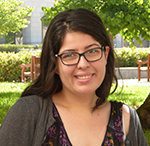
Maritza Correa is a recent graduate in Electrical Engineering. She is born and raised in the Bay Area and most of her work with energy and sustainability has been in the classroom. Now, she is interested in applying her technological knowledge to issues such as battery storage and photovoltaics. She hopes to learn more about the intersection between technology and policy in the energy sector and ultimately wants to walk away with the understanding of how engineers like her can effectively come up with solutions for the growing renewable movement. In the future, Maritza plans on pursuing a masters and hopes to further her involvement in energy. But in the meantime, she enjoys watching documentaries, going on runs, and eating Mexican food.
Ben Demonbreun
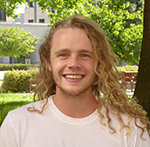
Ben Demonbreun is a coterm student pursuing a BS in Environmental Systems Engineering and an MS in Sustainable Design and Construction. He was born and raised in Nashville, Tennessee. His passion for sustainability comes from his elementary school librarian who ran a recycling program for the community. The summer after his sophomore year at Stanford, Ben conducted research in a lab in Y2E2 on how to make wastewater treatment more energy efficient with the help of anaerobic bacteria. The summer after that, he studied how self driving vehicles will impact the world’s energy systems at the Institute for Sustainable Energy Policy in Tokyo, Japan. After graduation, Ben hopes to solve problems related to the sustainability of our built environments. More specifically, he is interested in improving building energy efficiency and shifting transportation away from the personal automobile. Outside of the classroom, Ben is a member of Stanford Jump Rope. In his free time, he enjoys doing pretty much anything outside, watching shows on his laptop, and playing board games with friends.
Sean Hackett
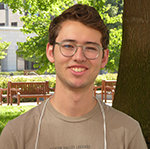
Sean Hackett is a rising sophomore from Atlanta, Georgia. He is pursuing a BS in physics and economics. Sean is a member of the Stanford Student Space Initiative, helping to design and engineer a non-toxic, low-cost DNA synthesis device. He hopes to use his knowledge acquired at the TomKat Center for Sustainable Energy to become an inventor, specifically in the area of fusion energy.
Aside from academics, Sean enjoys writing music and reading. Some of his favorite topics to read about are theoretical physics, marine technology, transportation, world history, American politics, and military science. There is much that Sean hopes to accomplish in these fields during his time as an undergraduate and beyond. He is very excited and grateful to be spending his time with the talented people at the TomKat Center.
Nefeli Ioannou

Nefeli Ioannou is studying mechanical engineering, and is thinking of specializing in energy systems. She has always been motivated to work on projects that have the potential of a tangible impact, which is why she was drawn to the TomKat Impact fellowship. Throughout her academic career, Nefeli has always been eager to draw connections between the purely technical aspects of her studies and their social and financial implications, which is the primary reason why she decided to add a humanities minor to her technical major. Nefeli’s interest in renewable energy is rooted in the environmental and socioeconomic climate of her upbringing. She grew up in Greece at a time of extreme financial strain for the country, but also during a time when Greece started investing more heavily in renewable sources as a source of energy and income. Watching her home country increasingly take advantage of its prime geographic location for solar and wind power despite the economic crisis inspired her to read and learn more about renewable energy production, while her engineering background allowed her to gain a more thorough understanding of the technology behind energy systems. She is excited to learn more and delve deeper in these issues this summer.
Cami Tussie

Cami Tussie is majoring in Biological Engineering and could not be more excited to join the 2018 TomKat Impact Fellows. Cami was born in Argentina but grew up in South Florida where she witnessed firsthand the lethal effects of unsustainable development and the pollution that comes along with it on beautiful public lands and animals. Cami is extremely passionate about combining her engineering coursework with her love for public policy to find tangible, sustainable solutions to solve our most pressing environmental problems. Outside of her academics, Cami is a tutor for Habla, a Stanford program that voluntarily tutors the Spanish-speaking custodial staff in English, and is very involved in Stanford’s Israel Association. She is also a member of Alpha Chi Sigma, Stanford’s Chemistry Fraternity. She loves traveling, reading, and of course, binge-watching her favorite shows. Cami cannot wait to work alongside a fantastic team to break the barriers currently present in California’s renewable natural gas.
David Yosuico

David Yosuico is a rising Junior studying Atmosphere and Energy Engineering in Stanford’s Civil and Environmental Engineering department. He was born and raised in a “zero waste” Filipino family in West Virginia, where he discovered his desire to protect the environment through his love for animals and nature. Having experienced a water crisis during his sophomore year of high school due to a coal plant spill, he realizes the importance of transitioning to clean energy for communities and the climate. He hopes to work on developing renewable energy through engineering solutions and effective policies, and he is excited to work with the TomKat Center for Sustainable Energy to research renewable natural gas development in California.

